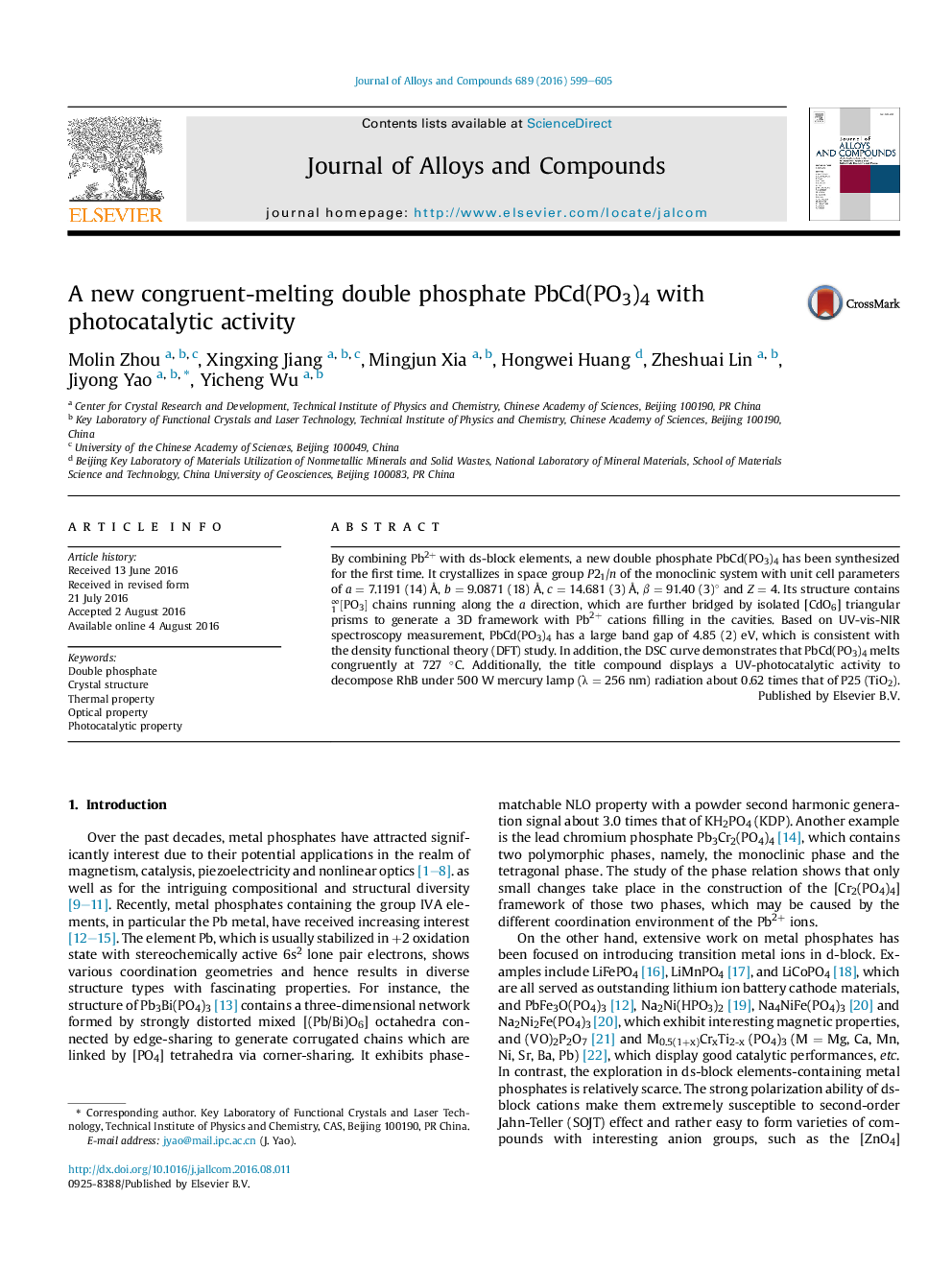| Article ID | Journal | Published Year | Pages | File Type |
|---|---|---|---|---|
| 1605178 | Journal of Alloys and Compounds | 2016 | 7 Pages |
•A new double phosphate PbCd(PO3)4 has been synthesized and characterized for the first time.•The structure features [PO3]1∞ chains bridged by isolated [CdO6] triangular prisms with Pb2+ cations occupying the cavities.•PbCd(PO3)4 has a large band gap of 4.85 (2) eV and displays congruent-melting behavior with the melting point of 727 °C.•PbCd(PO3)4 exhibits a UV-photocatalytic activity to decompose RhB about 0.62 times that of P25.
By combining Pb2+ with ds-block elements, a new double phosphate PbCd(PO3)4 has been synthesized for the first time. It crystallizes in space group P21/n of the monoclinic system with unit cell parameters of a = 7.1191 (14) Å, b = 9.0871 (18) Å, c = 14.681 (3) Å, β = 91.40 (3)° and Z = 4. Its structure contains [PO3]1∞ chains running along the a direction, which are further bridged by isolated [CdO6] triangular prisms to generate a 3D framework with Pb2+ cations filling in the cavities. Based on UV-vis-NIR spectroscopy measurement, PbCd(PO3)4 has a large band gap of 4.85 (2) eV, which is consistent with the density functional theory (DFT) study. In addition, the DSC curve demonstrates that PbCd(PO3)4 melts congruently at 727 °C. Additionally, the title compound displays a UV-photocatalytic activity to decompose RhB under 500 W mercury lamp (λ = 256 nm) radiation about 0.62 times that of P25 (TiO2).
Graphical abstractA new double phosphate PbCd(PO3)4 has been synthesized. Its structure contains [PO3]1∞ chains bridged by isolated [CdO6] triangular prisms with Pb2+ cations occupying the cavities. It has a large band gap of 4.85 (2) eV and melts congruently at 727 °C. Interestingly, PbCd(PO3)4 displays a photocatalytic activity to decompose RhB about 0.62 times that of P25.Figure optionsDownload full-size imageDownload as PowerPoint slide
